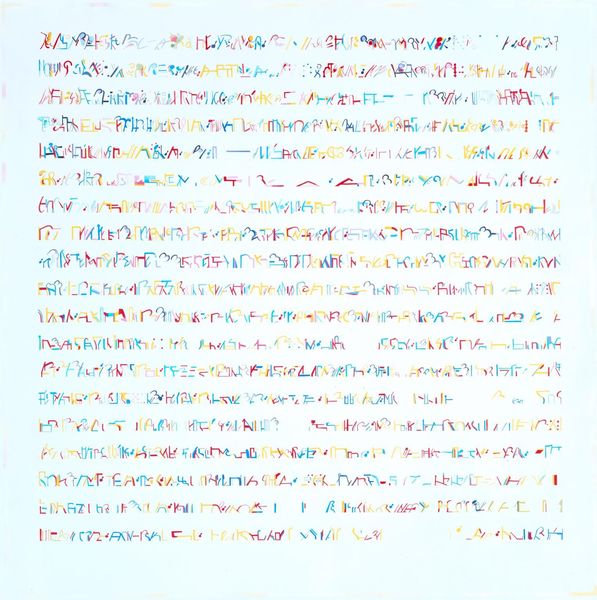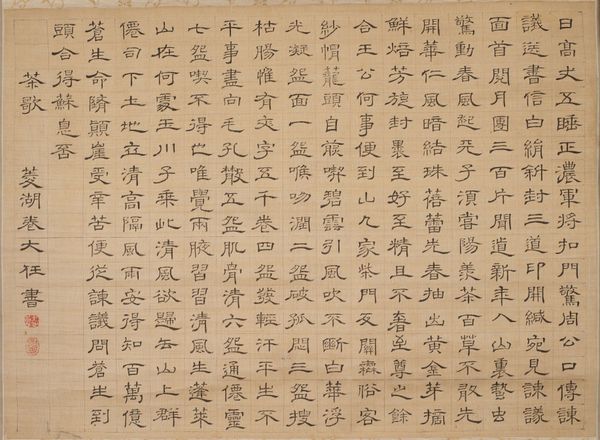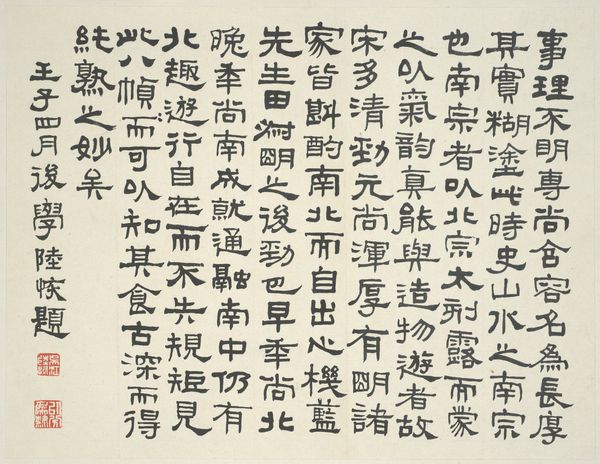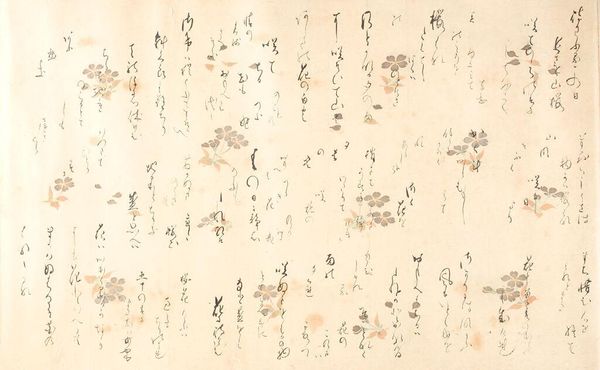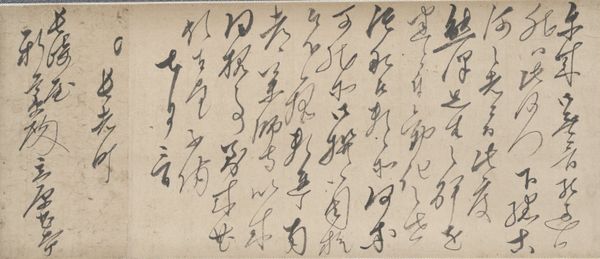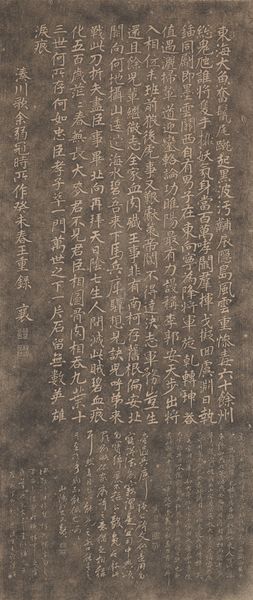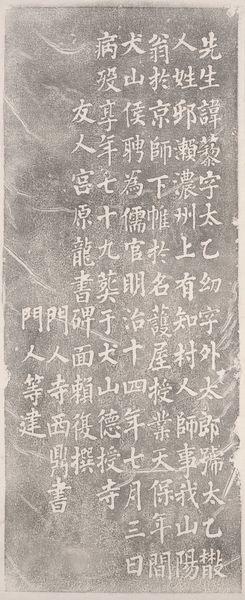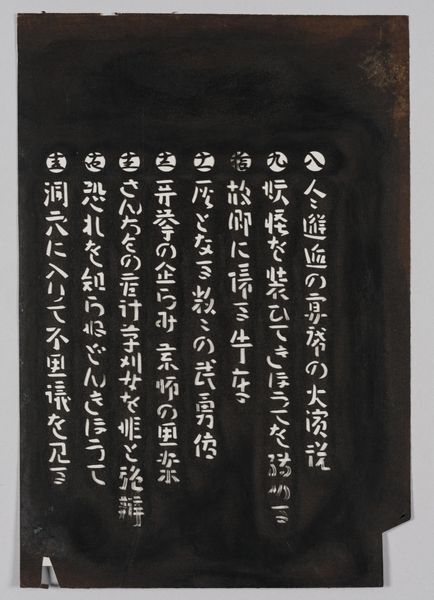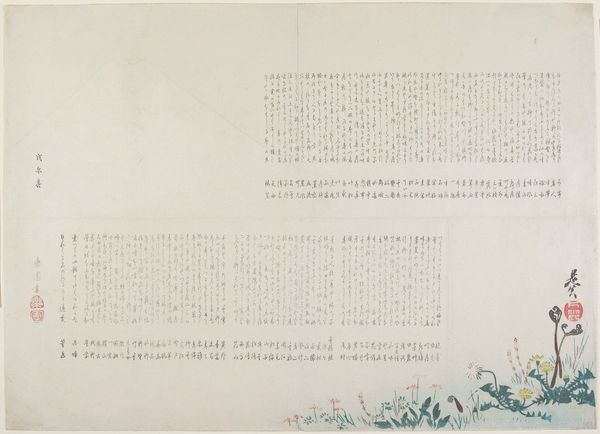
paper, ink-on-paper, hanging-scroll, ink
#
hand-lettering
#
lettering
#
asian-art
#
hand drawn type
#
hand lettering
#
japan
#
paper
#
ink-on-paper
#
hanging-scroll
#
ink
#
hand-drawn typeface
#
fading type
#
calligraphic
#
thick font
#
handwritten font
#
calligraphy
#
small lettering
Dimensions: 67 5/8 × 35 11/16 in. (171.77 × 90.65 cm) (image)81 3/8 × 38 5/16 in. (206.69 × 97.31 cm) (mount, mount)
Copyright: Public Domain
Curator: This hanging scroll, residing here at the Minneapolis Institute of Art, is a piece entitled "One Thousand Character Essay," created around 1785 by Masuyama Sessai. It's crafted using ink on paper. Editor: It's striking! At first glance, it’s overwhelming, dense…almost like a woven textile, but made entirely of tightly packed script. The materiality of the ink bleeds slightly into the paper giving the whole piece a soft, almost faded quality. Curator: Indeed. Sessai was deeply embedded within literary circles and Nanga painting traditions of his time. "One Thousand Character Essay" reflects his sophisticated engagement with Confucian ideals and artistic expression valued by the elite literati. He served as Osaka city magistrate at one point and was close with many important artists. Editor: Knowing he was also a magistrate lends another layer of interpretation. It raises questions about authorship, labor, and what it meant to produce such a densely written piece. Was this text transcribed or wholly composed by Sessai? Is there any indication if he might have had assistance with such a monumental task? It speaks volumes about skill and available labor more than aesthetics alone. Curator: Certainly. Calligraphy was, and remains, more than mere writing, of course. It's a cultivated art form linked to social standing and moral cultivation. Sessai would have been judged by his skill and fluency with brush and ink, especially within official circles. The characters, each carefully rendered, also reference the artist’s adherence to established philosophical structures of Japanese society during the Edo period. Editor: It's also worth pondering the type of paper chosen. How did its absorbency affect the ink flow, drying time, and the overall texture we observe today? Such details highlight the dialogue between the artist’s intention and the raw materials at their disposal, a conversation inherent in every aspect of creating tangible cultural objects. It shifts perspective towards viewing art production less as solely high aesthetic pursuit to a complex interplay of material conditions and creative expertise. Curator: Absolutely. By exploring Sessai's role and the cultural value placed on this piece, we can begin to decode the multiple layers within. The "Essay" is far more than words; it stands as a testament to Sessai’s commitment to artistic excellence, and is itself an expression of political and social influence of Japan. Editor: Reflecting upon the meticulous processes involved provides us insights into the society and culture. It definitely brings a new level of appreciation.
Comments
No comments
Be the first to comment and join the conversation on the ultimate creative platform.


